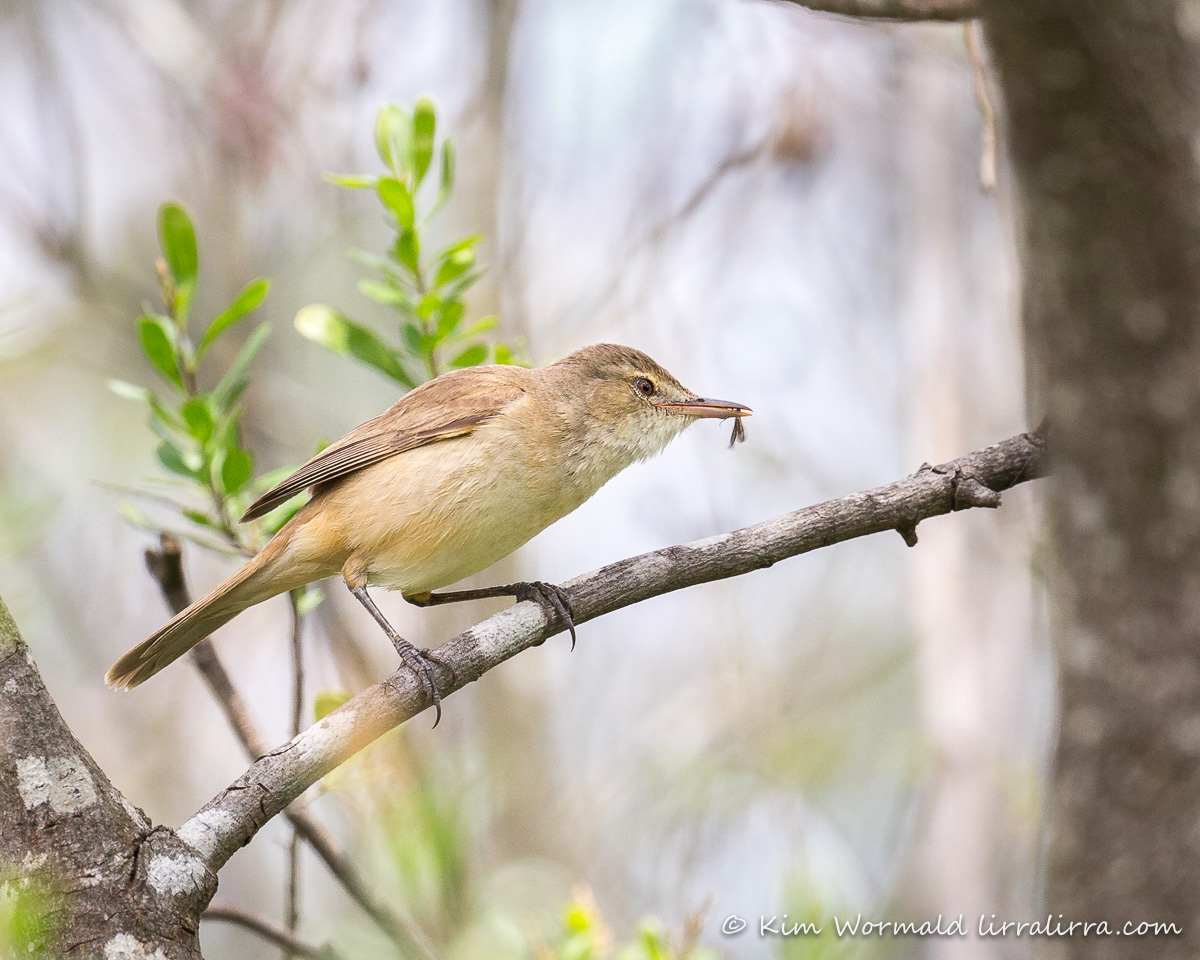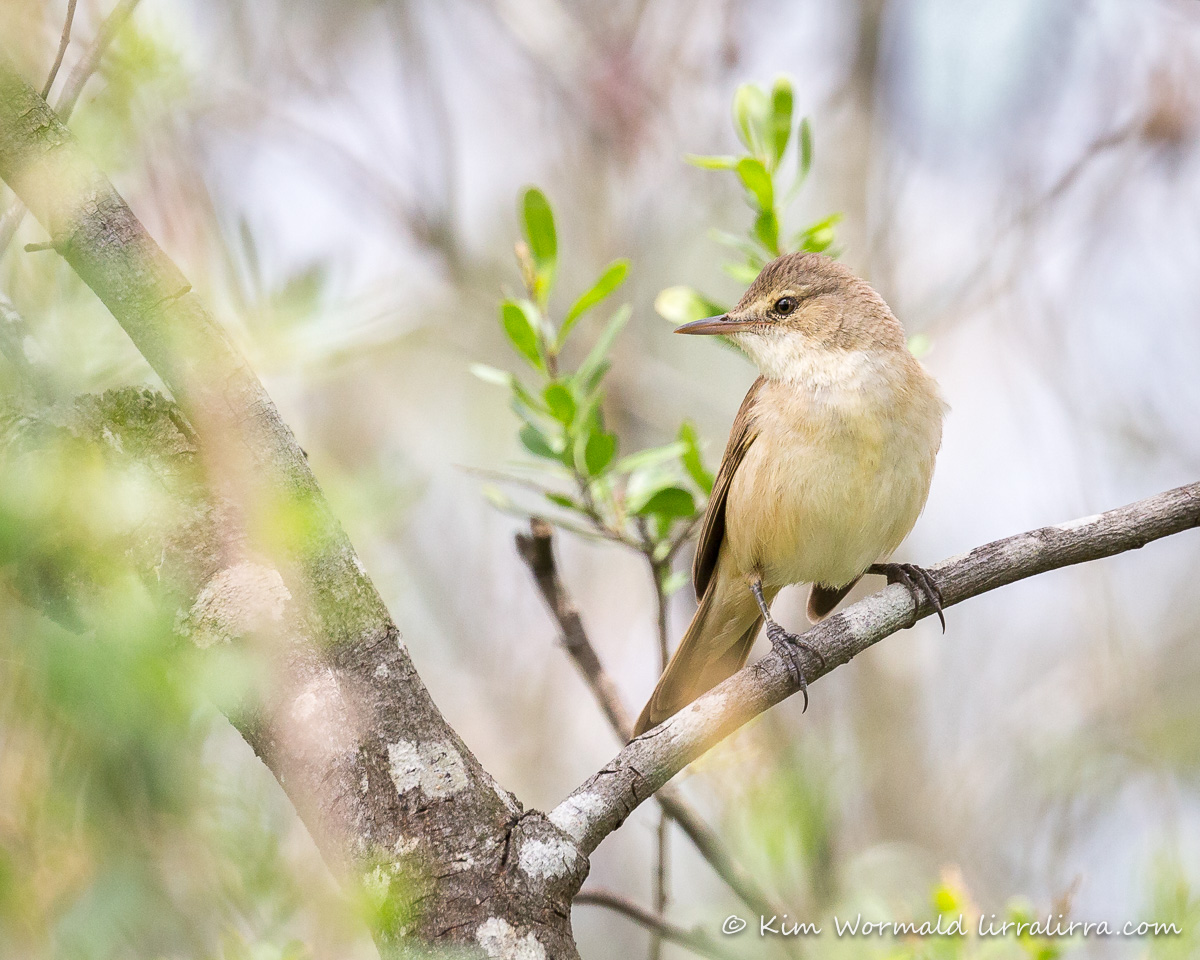Deep among the reeds was a nest that appeared empty. It was strung between the reeds, carefully crafted to hang, suspended where it was safely above the high water mark and yet low enough to be hidden from raptors and protected from the weather.

Australian Reed-warbler (Acrocephalus australis)
1/1250, f/7.1, ISO 1600
On the other side of the pond the adult reed-warbler above paused briefly before heading further afield to feed its young. I’m not sure whether it was fledglings from the nest or a different little family, I didn’t follow it to check.
Looking through my images from the past few years these two shots are by far the best I’ve managed of Australian Reed-warblers. I often hear their loud, melodious calling and I fairly often see them stretch-legged between the reeds or flitting across water. Occasionally I’ve managed to capture an image but they’ve invariably been pretty poor attempts with reedy blurs across the bird.
 Australian Reed-warbler (Acrocephalus australis)
Australian Reed-warbler (Acrocephalus australis)
1/1250, f/7.1, ISO 1600
At this site the water curves around an ‘island’ that hugs the track and luckily for me this reed-warbler seemed to be taking a short-cut.
Australian Reed-warblers live in many areas across the country. They frequent fresh and saline wetlands that have an abundance of reeds and rushes. These birds have a warm tinge to their feathers when they have freshly moulted which gradually becomes greyer as it ages – that has amusingly familiar ring to it.
Apparently some of the southern reed-warblers migrate here during the breeding season while other populations are believed to be sedentary. I have a particular fondness for the tiny details that distinguish the ‘little brown birds’. These reed-warblers are about 16cm, 18g and have a relatively long tail, a long narrow bill and distinctive pale eyebrows.
I had planned to share some Mistletoebird images today but suddenly realised I should save them for Christmas.
Happy birding
Kim
~ thank you for visiting and commenting
~ if you would like to join the subscribers receiving a weekly email when lirralirra is updated, please use the ‘subscribe’ box above right

Sorry forgot to say great shots as usual!
Thank you 🙂
Tough birds to photograph. It’s often a bit like ‘wack a mole’ game. They pop up in random spots and stay briefly! Nice shots.
So funny and so true Stephen!
Hi Kim,
Lovely images. Your images are full of sweetness. Me too I love this bird in France of course. The songs are beautiful.
My favorite is the second.
I hope you received my e-mail ?
All the best and happy birding.
Hi Nath, I received an email from you on 5.11 and replied the same day. I haven’t received anything since then, hopefully you received my reply – please let me know.
You’d have a different species of reed-warbler in France, maybe the Great Reed-warbler, there is also an Oriental but I’m not sure whether its range would get as far as you, it gets here sometimes as a vagrant. They all look very similar.
Hi Kim,
Sorry, I haven’t received your email.
I put a second email address in my comment. Can you try with this address please ?
Yes, we have 3 species of warbler in France,
– Great Reed Warbler 😉
– Eurasian Reed Warbler (the most widespread)
– Marsh Warbler
Hugs
Three species of reed-warbler would be neat to see, and listen to! Could you email me again using the address you’d like me to use for my response? That would be good, thank you 🙂
Very sweet! I love that your photography can open a window on their secret little world 🙂
It is like secret little worlds, I like that image 🙂